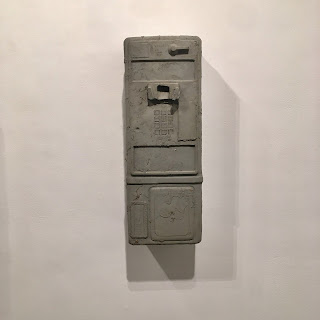I had to look back to find my first Village Disco post because I could not remember when I started writing this blog. It was May of 2015. At the time I was hosting monthly events at a gallery uptown that is now a tee shirt and souvenir shop. These events were literary readings and artist talks combined. I would choose a theme based on the current gallery show and invite the artist(s) and a writer to read and discuss their work. It was awesome. One regular participant (shout out to Neil) suggested I apply for an art writer’s grand and so I did. My proposal was to write a blog, which I had done before in conjunction with an exhibition series I organized in the same space, co-curated (with Kathy Rodriguez and Natalie Sciortino-Rinehart) and wrote about daily for 28 days. I did not get the grant but this blog was born.
The name Village Disco came from Bartek who I knew from living in Greenpoint, Brooklyn when it was still a Polish neighborhood. Bartek was complaining about the Polish night clubs in Connecticut (who knew?) where there was also concentration of Polish immigrants. He said these clubs were like...village discos. I loved the phrase. It conjured a place that is doing something urbane or maybe just urban but in a way can’t escape its provincial roots. Like New Orleans. Like me. In this blog space I could write about art without a template, focus on the experience of looking at art, explore connections between art and life, and according to at least one person, politely complain that I missed New York.
There were a couple of posts that made wider but still humble rounds, like the one in which I wrote critically of a piece of public art or the one where I gently objected to a local arts writer’s review of a show at NOMA. One post complained about playing music in Julia Street art galleries. For that I was politely confronted by a Julia Street gallery owner who said “You’re the one who doesn’t like music.” Mostly, I just shared these writings with the artists I wrote about. In 2016 I pretty much shut down the blog. I wrote a post about visiting NOMA after the 2016 election, about art soothing the wounded soul. I received an email from Russell Lord at NOMA thanking me for the post. I have reread his email occasionally over the last four years, especially if I feel drained of art purpose or just feel like crap in general. Jeeze, 2016 was four years ago…
At some point I decided I would like to write an art column, something like Artforum’s Art Diary, but on a village scale. I told my friend Chris, (my unlicensed life coach) this is what I wanted to do and he urged me to approach The New Orleans Review. By phone the editor Lindsay Sproul and I hammered out the details.
I just finished my first column for NOR, which is about Mail Art and Art about Mail and will be posted soon. So, I am shuttering this venue. If you have been a reader of this blog, thank you. If you are person working in the arts and would like to talk to me or show me your work, you can find me
on Instagram @thevillagediso or @emilyfarranto contact me through my website. See you at Village Disco, care of The New Orleans Review.







































